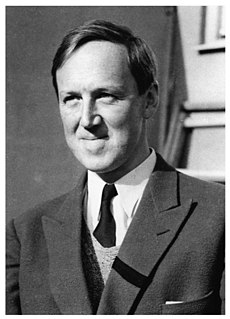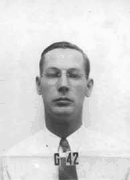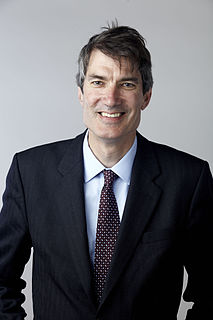
Princeton Plasma Physics Laboratory (PPPL) is a United States Department of Energy national laboratory for plasma physics and nuclear fusion science. Its primary mission is research into and development of fusion as an energy source.

Hannes Olof Gösta Alfvén was a Swedish electrical engineer, plasma physicist and winner of the 1970 Nobel Prize in Physics for his work on magnetohydrodynamics (MHD). He described the class of MHD waves now known as Alfvén waves. He was originally trained as an electrical power engineer and later moved to research and teaching in the fields of plasma physics and electrical engineering. Alfvén made many contributions to plasma physics, including theories describing the behavior of aurorae, the Van Allen radiation belts, the effect of magnetic storms on the Earth's magnetic field, the terrestrial magnetosphere, and the dynamics of plasmas in the Milky Way galaxy.

Eric J. Lerner is an American popular science writer, and independent plasma researcher. He wrote the 1991 book The Big Bang Never Happened, which advocates Hannes Alfvén's plasma cosmology instead of the Big Bang theory. He is founder, president, and chief scientist of Lawrenceville Plasma Physics, Inc.
Predhiman Krishan Kaw was an Indian plasma physicist. He had been the founding director of the Institute for Plasma Research and served the institute as the director from 1986 to 2012. He was born on 15 January 1948 in Srinagar, India. He matriculated from Punjab University (1958) and completed his M.Sc. from Agra University in 1964. He received PhD from Indian Institute of Technology, Delhi in 1966 under Supervision of Prof. M. S. Sodha, and was the first Ph.D. from the Indian Institute of Technology, Delhi. Kaw received his Ph.D. at the age of 18, following which he completed his PostDoc at Princeton University. He was awarded the prestigious Padma Shri award, India's fourth-highest honor, in 1985 and Shanti Swarup Bhatnagar Award in 1986. On 28 December 2016 he was awarded the Subrahmanyan Chandrasekhar Prize of Plasma Physics for his seminal contributions in the areas of laser-plasma interactions, strongly coupled dusty plasmas, and turbulence, nonlinear effect in magnetic fusion devices. He is also a recipient of the 2008 TWAS Prize.

Magnetic confinement fusion is an approach to generate thermonuclear fusion power that uses magnetic fields to confine the hot fusion fuel in the form of a plasma. Magnetic confinement is one of two major branches of fusion energy research, the other being inertial confinement fusion. The magnetic approach dates into the 1940s and has seen the majority of development since then. It is usually considered more promising for practical power production.
A dense plasma focus (DPF) is a type of plasma generating system originally developed as a fusion power device starting in the early 1960s. The system demonstrated scaling laws that suggested it would not be useful in the commercial power role, and since the 1980s it has been used primarily as a fusion teaching system, and as a source of neutrons and X-rays.

The Physical Research Laboratory (PRL) is a National Research Institute for space and allied sciences, supported mainly by Department of Space, Government of India. This research laboratory has ongoing research programmes in astronomy and astrophysics, atmospheric sciences and aeronomy, Earth sciences, Solar System studies and theoretical physics. It manages the Udaipur Solar Observatory and is located in Ahmedabad.

Marshall Nicholas Rosenbluth was an American plasma physicist and member of the National Academy of Sciences. In 1997 he was awarded the National Medal of Science for discoveries in controlled thermonuclear fusion, contributions to plasma physics, and work in computational statistical mechanics. He was also a recipient of the E.O. Lawrence Prize (1964), the Albert Einstein Award (1967), the James Clerk Maxwell Prize in Plasma Physics (1976), the Enrico Fermi Award (1985), and the Hannes Alfvén Prize (2002).

The Institute for Plasma Research (IPR) is an autonomous physics research institute located in India. The institute is involved in research in aspects of plasma science including basic plasma physics, research on magnetically confined hot plasmas and plasma technologies for industrial applications. It is a large and leading plasma physics organization in India. The institute is mainly funded by Department of Atomic Energy. IPR is playing major scientific and technical role in Indian partnership in the international fusion energy initiative ITER. It is part of the IndiGO consortium for research on Gravitational Waves.
The Plasma Science and Fusion Center (PSFC) at the Massachusetts Institute of Technology (MIT) is known internationally as a leading university research center for the study of plasma and fusion science and technology.

Donald William Kerst was an American physicist who worked on advanced particle accelerator concepts and plasma physics. He is most notable for his development of the betatron, a novel type of particle accelerator used to accelerate electrons.
John Myrick Dawson was an American computational physicist and the father of plasma-based acceleration techniques. Dawson earned his degrees in physics from the University of Maryland, College Park: a BS in 1952 and PhD in 1957. His thesis "Distortion of Atoms and Molecules in Dense Media" was prepared under the guidance of Zaka Slawsky.
Ghulam Murtaza, SI(C) FPAS, is a Pakistani plasma physicist and mathematician. He is the Professor of the Physics at research Centre, known as the Salam Chair in Physics, at the Government College University, while also become the acting Director General of Abdus Salam School of Mathematical Sciences. Previously, Murtaza served as Director National Centre for Mathematics at the Government College University from 2004 to 2006. He was also Director General of National Tokamak Fusion Program, Pakistan Atomic Energy Commission from 2007 to 2008. Specialized in the Thermonuclear fusion, Murtaza is known for his contribution to the field of Theoretical and controlled solar plasmas.
P. I. John is an Indian plasma physicist. He occupies the Meghnad Saha Chair in Plasma Science and Technology at the Institute for Plasma Research, Ahmedabad.
Francis F. Chen is a Chinese-born American plasma physicist.

Sir Steven Charles Cowley is a British theoretical physicist and international authority on nuclear fusion and astrophysical plasmas. He has served as director of the United States Department of Energy (DOE) Princeton Plasma Physics Laboratory (PPPL) since 1 July 2018. Previously he served as president of Corpus Christi College, Oxford, since October 2016. and head of the EURATOM / CCFE Fusion Association and chief executive officer of the United Kingdom Atomic Energy Authority (UKAEA).
Uragan-2M is a stellarator installed at the Institute of Plasma Physics National Science Center, which is part of the Kharkiv Institute of Physics and Technology in Kharkov, Ukraine. It was the largest stellarator (torsatron) in Europe.
CSES is a Chinese–Italian space mission dedicated to monitoring electromagnetic field and waves, plasma parameters and particle fluxes induced by natural sources and artificial emitters in the near-Earth space. Austria contributes to one of the magnetometers.
Li Jiangang is a Chinese plasma physicist. He is a research fellow at the Hefei Institutes of Physical Science and a professor of the University of Science and Technology of China (USTC). He formerly served as Vice President of USTC and Director of the Institute of Plasma Physics, Chinese Academy of Sciences. He was elected an academician of the Chinese Academy of Engineering in 2015.











